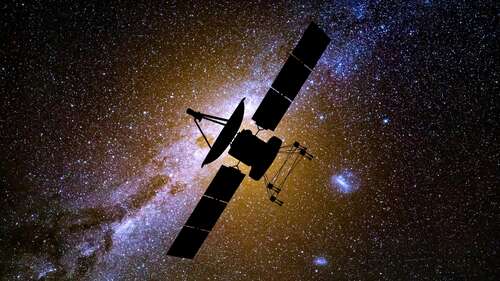
Satellite communication technology is gaining global attention as its signals expand beyond the Earth’s surface and to the upper atmosphere and space. This expansion not only advances technology itself but also paves the way for creating new business models.
Satellite communication can be described as a type of wireless communication that uses satellites orbiting the Earth to send and receive information between the ground and a satellite or between satellites.
Also: Satellite SOS is showing up on Pixel phones – how it can help you in an emergency
These days, it is closely connected to the era of 6G, the technology known for its three-dimensional communication capabilities. Incorporating satellite communication into 6G could enhance the synergy of communication technologies.
This means that in the era of 6G, mobile communication signals are no longer confined to the Earth’s surface but are utilized throughout the upper atmosphere. For instance, mobile signals now facilitate services for in-flight Wi-Fi. In the future, they’ll likely play a role in utilizing signals in drones and Urban Air Mobility (UAM).
Satellite communication emerges as the best alternative in situations where terrestrial networks fail. Notable instances include its deployment in Ukraine during the Russian invasion when communication infrastructure was destroyed. A volcanic eruption in Tonga, an island nation in the South Pacific, severely damaged undersea cables, cutting off internet access. During the crisis, the critical role of satellite communication became prominently evident.
Also: This small change in the definition of broadband could have a big impact
So, who’s invested in satellite communication? Several major US tech conglomerates certainly are, including Alphabet, Google’s parent company, that envisioned ‘Project Loon’, which aims to provide global internet connectivity through stratospheric balloons acting as floating cell towers. Meta has also explored expanding internet reach but through solar-powered drones.
Recently, companies like SpaceX and Amazon have launched communication satellites into space, heralding the era of space internet. This means that the prominence of satellite communication technology is a significant trend in the telecommunications industry.
At Mobile World Congress this year, satellite communication received a considerable amount of attention, with demonstrations extending beyond the indoor halls of the Fira Gran Via exhibition center. SpaceX and Intelsat showcased their satellite communication technologies side by side, utilizing outdoor spaces to display antennas necessary for receiving satellite signals.
SpaceX high-speed internet demo at MWC 2024. ZDNET Korea
SpaceX’s Starlink made a notable appearance by modifying its outdoor booth’s ceiling to accommodate satellite antennas, ensuring clear signal reception. Intelsat partnered with a mobility collaborator to show a mobile satellite antenna, bringing the technology directly to the attendees.
Also: I hiked with Garmin’s ‘unlimited battery’ GPS tracker and it made life so much easier
The catchphrases used by these satellite communication companies were particularly engaging, offering promises like “Stay connected, no matter where you are” and “Bringing the closest connection on Earth,” cleverly highlighting the unique benefits of satellite communication.
Satellite communications outside of the US
Other companies presented their innovations in satellite communications too, including Eutelsat OneWeb, which showcased a model of the OneWeb satellite. OneWeb, known for its competitive stance alongside SpaceX, counts Hanwha Aerospace, a leading South Korean space company, as one of its major shareholders.
Following the completion of a merger and acquisition process with Eutelsat, a top French satellite communications firm, last year, Eutelsat OneWeb was launched. The company successfully deployed 634 low Earth orbit satellites last year to complete its space-based internet network, initially rolling out services focused on high-latitude regions like Alaska and Canada. Plans are underway to expand satellite services globally within the first half of this year.
Also: The best satellite phones of 2024: Expert tested and reviewed
Japanese mobile operator KDDI also showcased its collaborative model with SpaceX’s Starlink. It highlighted a venture that maintains continuous communication links even when traditional mobile networks are disrupted, using mobile network base stations instead. Despite potential losses in terrestrial fiber-optic cables, the model suggests that internet connectivity can be maintained through approximately 200 Starlink satellites.
The company also introduced a service that enables direct satellite communication on its own brand smartphones, Au. This service connects satellite signals directly to regular cell phones without the need for a separate satellite antenna. A similar service has been launched by T-Mobile and Starlink in the United States.
Considering these factors, satellite technology is clearly attracting significant attention not just from big tech companies in the United States but also from industries throughout Asia and Europe.

